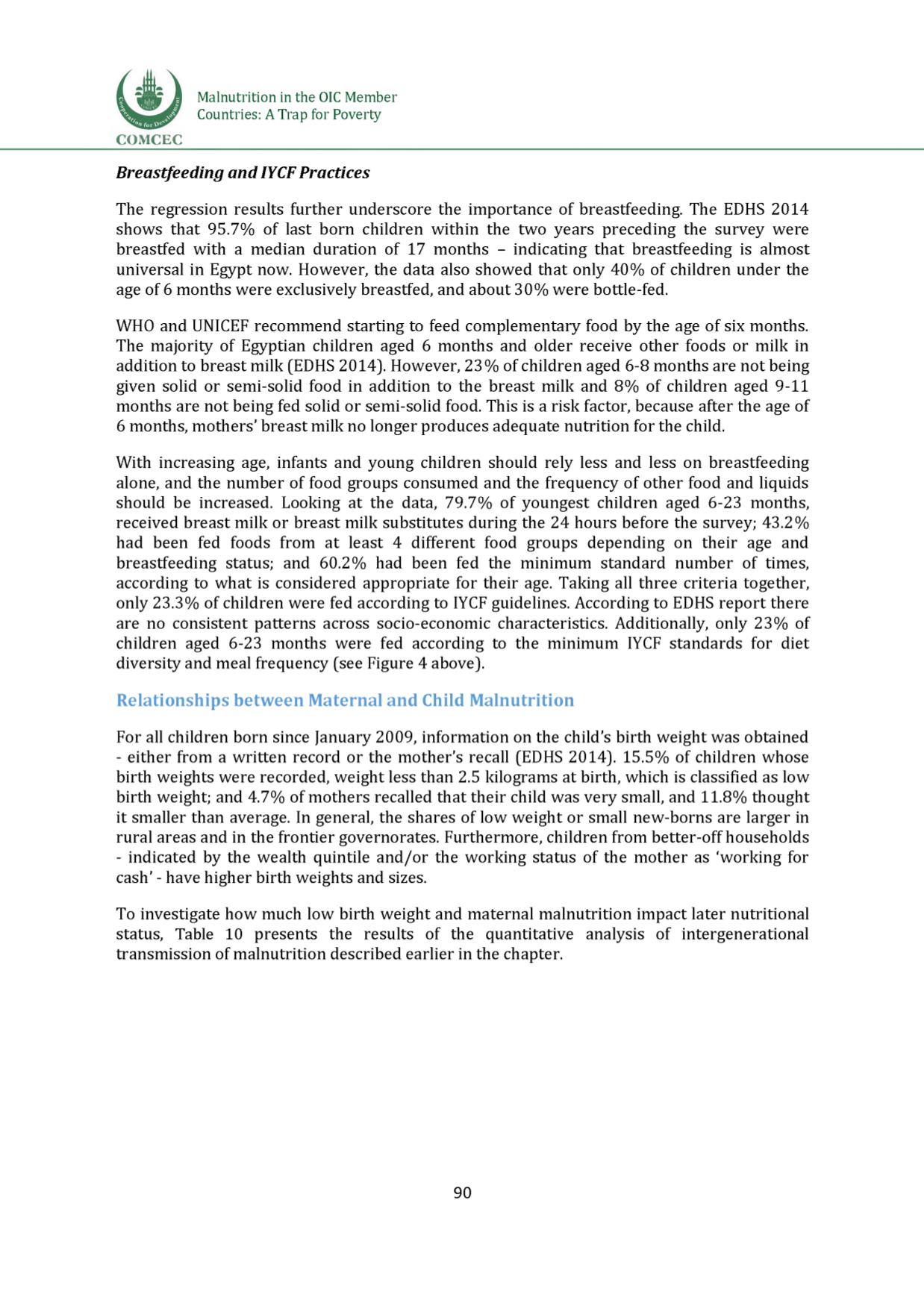

Malnutrition in the OIC Member
Countries: A Trap for Poverty
COMCEC
Breastfeeding and IYCFPractices
The regression results further underscore the importance of breastfeeding. The EDHS 2014
shows that 95.7% of last born children within the two years preceding the survey were
breastfed with a median duration of 17 months - indicating that breastfeeding is almost
universal in Egypt now. However, the data also showed that only 40% of children under the
age of
6
months were exclusively breastfed, and about 30% were bottle-fed.
WHO and UNICEF recommend starting to feed complementary food by the age of six months.
The majority of Egyptian children aged
6
months and older receive other foods or milk in
addition to breast milk (EDHS 2014]. However, 23% of children aged
6 - 8
months are not being
given solid or semi-solid food in addition to the breast milk and
8
% of children aged 9-11
months are not being fed solid or semi-solid food. This is a risk factor, because after the age of
6
months, mothers' breast milk no longer produces adequate nutrition for the child.
With increasing age, infants and young children should rely less and less on breastfeeding
alone, and the number of food groups consumed and the frequency of other food and liquids
should be increased. Looking at the data, 79.7% of youngest children aged 6-23 months,
received breast milk or breast milk substitutes during the 24 hours before the survey; 43.2%
had been fed foods from at least 4 different food groups depending on their age and
breastfeeding status; and 60.2% had been fed the minimum standard number of times,
according to what is considered appropriate for their age. Taking all three criteria together,
only 23.3% of children were fed according to IYCF guidelines. According to EDHS report there
are no consistent patterns across socio-economic characteristics. Additionally, only 23% of
children aged 6-23 months were fed according to the minimum IYCF standards for diet
diversity and meal frequency (see Figure 4 above].
Relationships between Maternal and Child Malnutrition
For all children born since January 2009, information on the child's birth weight was obtained
- either from a written record or the mother's recall (EDHS 2014). 15.5% of children whose
birth weights were recorded, weight less than 2.5 kilograms at birth, which is classified as low
birth weight; and 4.7% of mothers recalled that their child was very small, and 11.8% thought
it smaller than average. In general, the shares of low weight or small new-borns are larger in
rural areas and in the frontier governorates. Furthermore, children from better-off households
- indicated by the wealth quintile and/or the working status of the mother as 'working for
cash' - have higher birth weights and sizes.
To investigate how much low birth weight and maternal malnutrition impact later nutritional
status
, Table 10 presents the results of the quantitative analysis of intergenerational
transmission of malnutrition described earlier in the chapter.
90
















